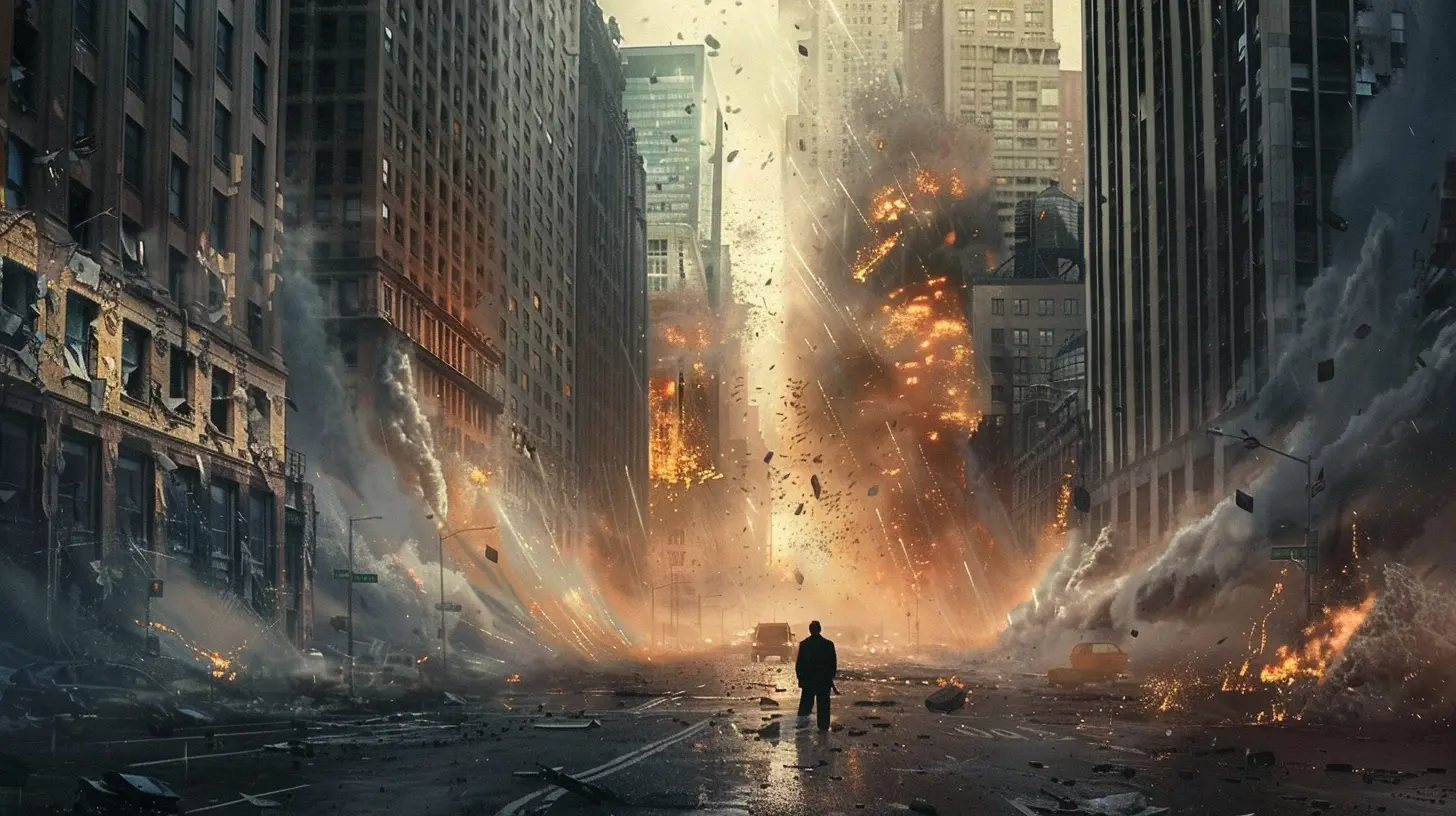The Role of Technology and High-Frequency Trading in Market Crashes
17 August 2025
Have you ever wondered how a market crash happens in the blink of an eye? One moment, everything's fine—and the next, the stock market is tanking faster than you can refresh your screen. The culprit? Often, it's not just panic or bad news. It's the rise of technology and something called high-frequency trading (HFT).
In this blog post, we’re diving into the fascinating (and slightly unsettling) world of technology's role in modern financial markets. We’ll walk through what high-frequency trading actually is, why it matters, how it can trigger or worsen market crashes, and what regulators and investors can do about it.
So grab a coffee, settle in, and let’s pull back the curtain on this high-speed rollercoaster.
What is High-Frequency Trading (HFT), Anyway?
Let’s start with the basics. High-frequency trading is a form of algorithmic trading. That means computers—not humans—are making lightning-fast trades based on pre-programmed instructions. We're talking about making thousands of trades in fractions of a second. It’s kind of like Formula 1 racing, but with stocks.Traders use HFT strategies to profit from small price changes. On their own, those tiny gains wouldn’t be worth much. But when you’re trading millions of shares a day? They add up—fast.
Key Features of HFT:
- Speed: Milliseconds matter. Traders compete to be the fastest.- Volume: Massive numbers of trades executed automatically.
- Algorithms: Complex formulas decide when to buy or sell.
- Market Access: Typically done by big financial institutions with deep pockets and cutting-edge tech.
Now, let’s talk about why this matters. Because what seems like just harmless tech magic can sometimes lead to very real chaos.
Technology Has Changed the Game
Think back a few decades. The stock market used to be a place of shouting brokers, ticker tape, and phone calls. Today, it’s dominated by sleek algorithms and supercomputers parked just meters away from stock exchange servers to shave off microseconds.Technology has given us convenience, speed, and better access to markets. That’s the good news.
But here’s the flip side: it’s also made the system incredibly complex and extremely sensitive. Like a Jenga tower, one wrong move—or one bad algorithm—can cause the whole thing to wobble or crash.
A Closer Look at Notorious Flash Crashes
No discussion about HFT and technology’s role in market crashes would be complete without looking at some infamous real-life examples. Let’s unpack a few, shall we?The Flash Crash of May 6, 2010
On that chaotic afternoon, the Dow Jones Industrial Average plunged nearly 1,000 points in just minutes—its biggest intraday point drop in history at the time. Then, just as quickly, it rebounded. It was like the market had a panic attack and then calmed down, all within half an hour.So what caused it?
A perfect storm of aggressive selling, HFT algorithms going haywire, and a lack of liquidity. One big trade by a mutual fund triggered a cascade of automatic sell orders by HFT systems. Once the ball started rolling downhill, it accelerated fast.
Other Mini Crashes
There have been several other “mini” flash crashes in recent years—such as the 2013 bond market algo glitch or the 2015 ETF flash crash. These events aren’t just blips. They’re warning signs that our markets can be fragile, especially when computers are calling the shots.
How Exactly Can HFT Cause or Worsen Market Crashes?
Okay, so HFT isn’t all bad. It can provide liquidity, lower trading costs, and help markets operate more efficiently during normal times. But under stress? That’s when the dark side comes out.1. Liquidity Mirage
HFT firms often act as market makers, meaning they stand ready to buy and sell stocks. But here’s the catch: their commitment to the market can disappear in a flash.The second things look shaky, HFTs pull their orders to avoid risk. This makes liquidity dry up just when it’s needed most. It’s like turning off all the water taps during a fire.
2. Feedback Loops
Algorithms act fast. Too fast, sometimes.When prices start to fall, algorithms might trigger more sell orders—causing prices to fall even faster. It's like a snowball rolling down a hill, growing bigger and faster the further it goes. This feedback loop can deepen a crash in mere seconds.
3. Market Fragmentation
HFT thrives in fragmented markets—where trading happens across dozens of exchanges. While this boosts competition, it also makes it harder to see the full picture. Prices might be different on different platforms, creating confusion and instability.4. Quote Stuffing
Some HFT strategies involve flooding the market with fake “offers” to confuse competitors. It’s like someone constantly screaming fake prices on an auction floor. This can slow down systems and make it harder for humans and slower machines to react.Why Regulators Are Playing Catch-Up
Here’s the tricky part: regulation just hasn’t kept up with technology.Most financial regulations were written when trading was still a mostly human activity. Now, regulators are trying to monitor machines that make thousands of decisions a second.
Some issues that make regulation tough:
- Opacity: HFT algorithms are like black boxes—secret and proprietary.
- Jurisdiction: Trading often happens across global platforms.
- Speed: Regulators can’t move as quickly as the tech they’re regulating.
That said, changes are happening. Measures like circuit breakers (which pause trading after big moves) and reporting requirements for algorithmic traders are steps in the right direction. But is it enough? That depends on who you ask.
The Bigger Picture — Not Just a Tech Problem
Let’s not put all the blame on HFT and technology. Market crashes have been around long before computers.Investor psychology, economic shocks, geopolitical tensions—there are plenty of factors in play. Technology and HFT are just accelerants. They can make fires burn faster and hotter, but they’re not always the match that lights them.
It’s like blaming the freeway for a car crash. Sure, speed plays a role—but so do the drivers and the weather.
What Does This Mean for Everyday Investors Like You and Me?
If you’re not sitting on a high-frequency trading desk in New York or London, does this affect you?In short, yes. When crashes happen, even if they’re caused by machines, they can wipe out value from your 401(k), retirement fund, or investment portfolio in seconds. Even if the market recovers, the short-term volatility can be unnerving—and for some, financially devastating.
But don’t panic just yet. Here are a few ways to protect yourself:
- Stay Diversified: Don't put all your eggs in one basket.
- Avoid Panic Selling: Remember, many flash crashes bounce back quickly.
- Long-Term Focus: Zoom out. If you’re investing for the long haul, don’t let short-term noise distract you.
- Use Limit Orders: These can help you avoid getting caught in wild price swings during sudden volatility.
Is There a Future Where Tech and Stability Coexist?
Absolutely. Tech isn’t the enemy—we just need smarter guardrails.Artificial intelligence, blockchain, and better market monitoring tools can actually enhance stability if used correctly. Imagine algorithms that can detect instability and slow themselves down when things get too volatile. Or transparent systems that let regulators see what’s brewing before it’s too late.
We just need the will—and vision—to build them.
Final Thoughts
So, what’s the verdict on technology and high-frequency trading in market crashes?They’re not villains. But they’re powerful tools—and powerful tools need careful handling. Think of HFT like fire: under control, it cooks your dinner; out of control, it burns down your house.
As investors, we can’t stop market crashes altogether. But by understanding how this high-speed, tech-driven world works, we can be better prepared for the bumps, dips, and occasional freefalls along the way.
Stay curious, stay informed, and don’t let the algos scare you away from smart investing.
all images in this post were generated using AI tools
Category:
Stock Market CrashAuthor:

Alana Kane
Discussion
rate this article
1 comments
Oliver Rocha
This article raises fascinating questions about the interplay between technology and market stability. How do you see high-frequency trading evolving in the future, especially in light of potential crash scenarios?
September 16, 2025 at 11:52 AM

Alana Kane
Thank you for your insightful comment! I believe high-frequency trading will continue to evolve, potentially incorporating more robust risk management algorithms to mitigate crash scenarios while also facing increasing regulatory scrutiny.


